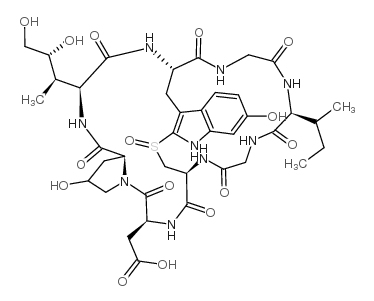Strongly enhanced toxicity of the mushroom toxin alpha-amanitin by an amatoxin-specific Fab or monoclonal antibody.
H Faulstich, K Kirchner, M Derenzini
Index: Toxicon 26(5) , 491-9, (1988)
Full Text: HTML
Abstract
A monoclonal antibody, with high affinity against the mushroom toxin alpha-amanitin, was prepared. Administration of the Fab fragment of the monoclonal antibody to mice caused a 50-fold increase in alpha-amanitin toxicity. Electron micrographs showed normal appearance of hepatocytes but typical, amanitin-induced lesions in cells of the proximal convoluted tubules of the kidney. The pronounced nephrotoxicity is mainly explained by glomerular filtration and tubular reabsorption of the Fab-amatoxin complex and, to a lesser extent, of the immunoglobulin-amatoxin complex, which is still c. Twice as toxic as free alpha-amanitin. To our knowledge this is the first reported case where immunoglobulins or their fragments enhance rather than decrease the activity of a toxin. Accordingly, immunotherapy of Amanita mushroom poisoning in humans does not appear promising.
Related Compounds
| Structure | Name/CAS No. | Molecular Formula | Articles |
|---|---|---|---|
 |
beta-Amanitin
CAS:21150-22-1 |
C39H53N9O15S |
|
[Determination of amanitatoxins by HPLC].
2003-10-01 [Chudoku. Kenkyu. 16(4) , 441-5, (2003)] |
|
Gas chromatography-mass spectrometry (GC-MS) and liquid chro...
1997-02-07 [J. Chromatogr. B. Biomed. Sci. Appl. 689(1) , 81-9, (1997)] |
|
Validated electrospray liquid chromatographic-mass spectrome...
2000-10-01 [J. Chromatogr. B. Biomed. Sci. Appl. 748(1) , 125-35, (2000)] |
|
Determination of alpha-amanitin and beta-amanitin in human b...
1985-08-15 [Anal. Biochem. 149(1) , 35-42, (1985)] |
|
Determination of alpha- and beta-amanitin in clinical urine ...
2008-08-05 [J. Pharm. Biomed. Anal. 47(4-5) , 913-7, (2008)] |